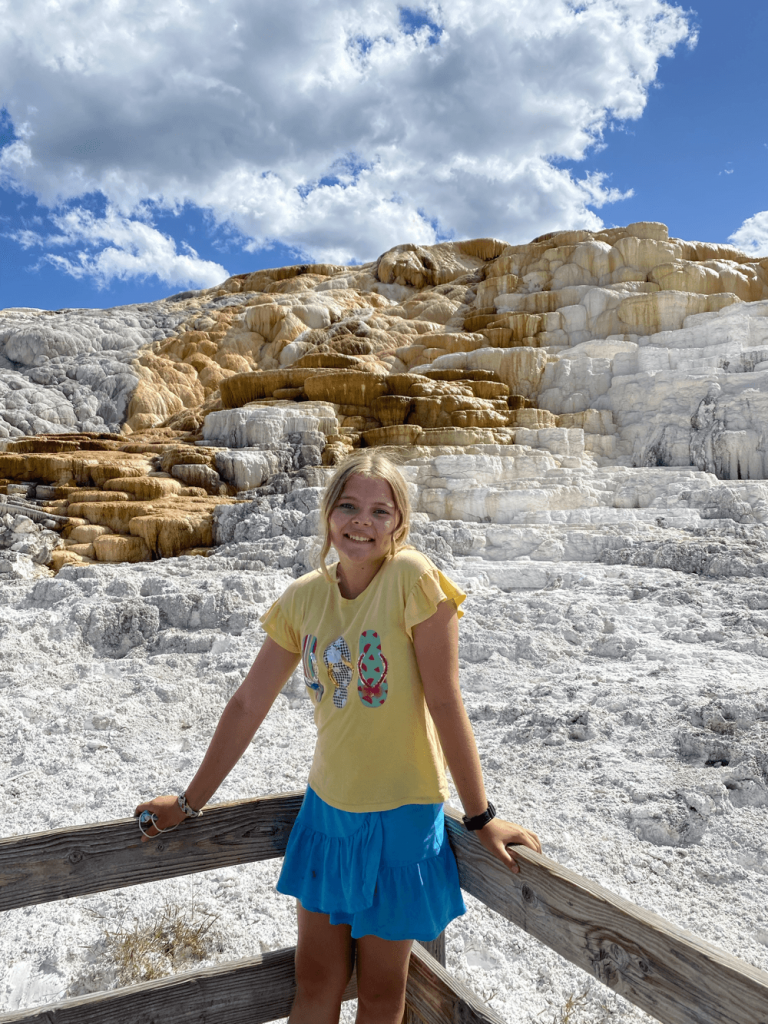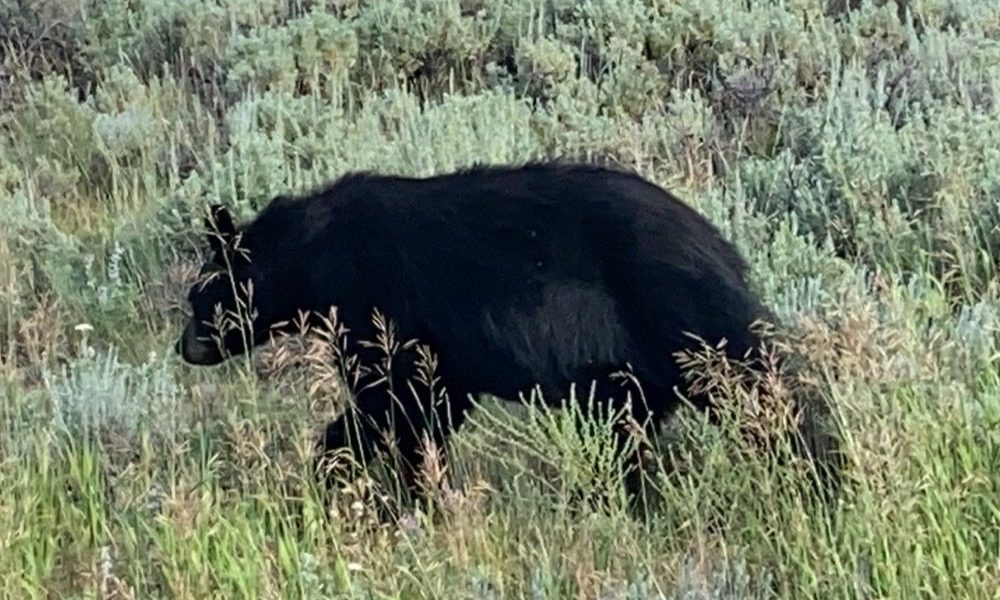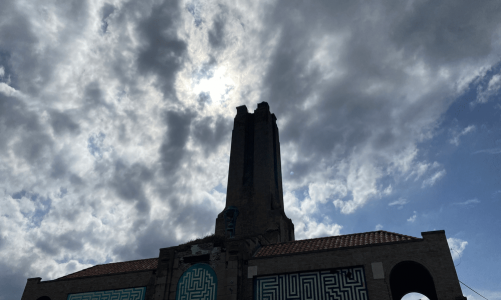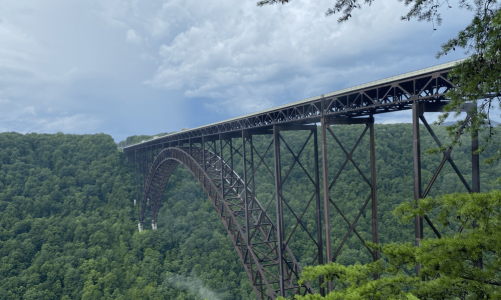Our last full day in Yellowstone was spent quite well. Our morning started with the Grand Geyser. On our drive there we were passing by the Firehole River Canyon. The walls of the canyon were cold, gray, and rough, in contrast to the glowing and smooth walls of the canyon we had seen yesterday.
The best thing about the waterfall was a large boulder splitting the Firehole waterfall in half. Grand Geyser is the tallest predictable geyser on earth, erupting every 6 or 7 hours. It can go as high as 200 feet (61 meters) and lasts 9 to 12 minutes. One interesting fact about it is that it is a fountain geyser, meaning it erupts from a basin pool, unlike Old Faithful and Castle Geysers, which are cone geysers, erupting from cones.
While we were waiting, a ranger explained to us how they know when it will erupt. The turban geyser right next to Grand Geyser has a cycle; bubbling every 20 minutes. During its cycle you have to look at Grand Geyser. Right before erupting the basin overflows and has waves.
That’s how you can tell if it will erupt this time. If the Grand Geyser pool doesn’t show these signs, you have to wait 20 more minutes and check for the signs again. We were watching the pool, and suddenly the waves started and the geyser erupted, water flying up into the air.
The turban geyser erupted at the same time as Grand Geyser, creating a Grand start.
Steamboat Geyser & the Norris Geyser Basin
Next we went to the Norris Geyser basin, where we were met with a surprise. Steamboat Geyser, the tallest geyser in the world, had erupted at 11:41 AM, July 19, 2020. We arrived at Norris Geyser basin at around 2:00. We were a little over 2 hours late to see the actual eruption, but we did get to see enormous amount of steam erupting from the cone about 80 meters (250 feet) up into the air.
It was amazing to see the tallest geyser in the whole world almost erupt!
One other thing we did in Norris Geyser Basin was see porcelain basin. It was beautiful, all different pastel colors in the pool and in streams seeping out of it. The landscape around was also amazing, the sky was blue and the clouds big and white.
Hot Spring Terraces!

Our next destination was Mammoth hot springs. We didn’t do much there, just ate lunch and looked at the famous travertine terraces, the fastest-changing features of the park.
The travertine terraces are different from other features of Yellowstone because they are made from travertine.
Travertine is a white and chalky material naturally extracted from limestone when hot acidic water rises through the rock, dissolving large amounts of it and forming Carbon Dioxide. When the carbonated water carries dissolved calcium from the limestone reaches the surface, some carbon dioxide escapes, leaving travertine. Where there is no travertine the terraces are an orangey color.
A Bear in the Wild!
Driving away from Mammoth Hot Springs we passed through Hayden valley. Suddenly, we saw something black and furry move through the grass right along the road.
A Black Bear cub!
It walked along the road, and then crossed it! It crossed the road right in front of our car! I was amazing! I had never seen a bear in the wild, and wasn’t expecting to see one, but I did! We had to drive on when the bear left. We were still recovering from seeing a real life bear when we noticed a wolf lurking behind the trees. Today was our lucky day!
A bear, and five minutes later, a wolf! We didn’t see the wolf as well though because it was a bit farther away. But I got to watch it for about 30 seconds from the binoculars before it hid behind a hill. Soon we turned off Hayden Valley and onto Canyon Drive.
We drove on an unpaved road through hills and trees. I guess you could say it was the closest thing to hiking in your car.
For dinner we went to Sheepeater cliff for dinner, where we ate a trout my dad caught. The Sheepeater cliffs is a series of cliffs made of Basalt Columns. The lava was deposited there about 500,000 years ago during a basaltic flood in the Yellowstone caldera.
The cliffs are named after Eastern Shoshone Native Americans called Tukuaduka (sheepeaters). While we were there we heard some squeaking sounding like hamsters. Then we looked closely at the cliffs, we saw a wild chinchilla like animal crying out to fellow rodents! I know that it wasn’t really a wild chinchilla because they are found only in Chile. After that we drove to our hotel for our last night in the National Park.



